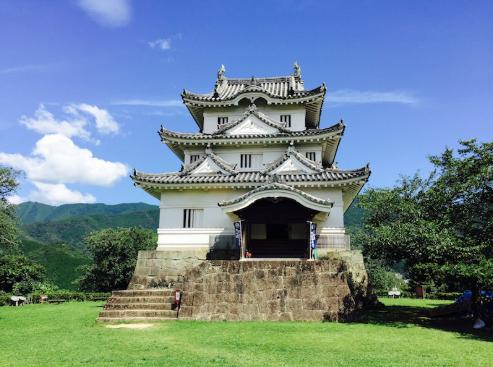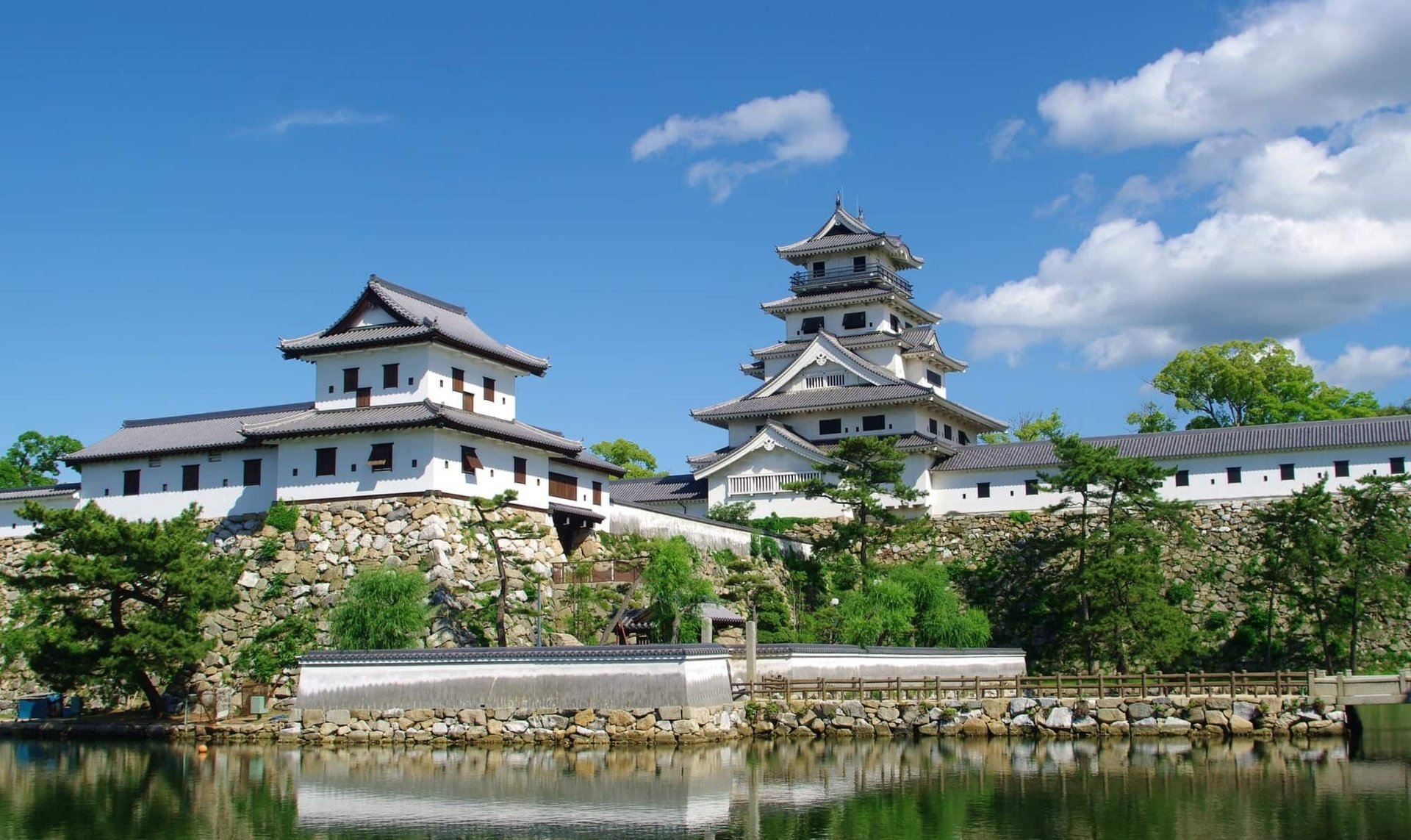
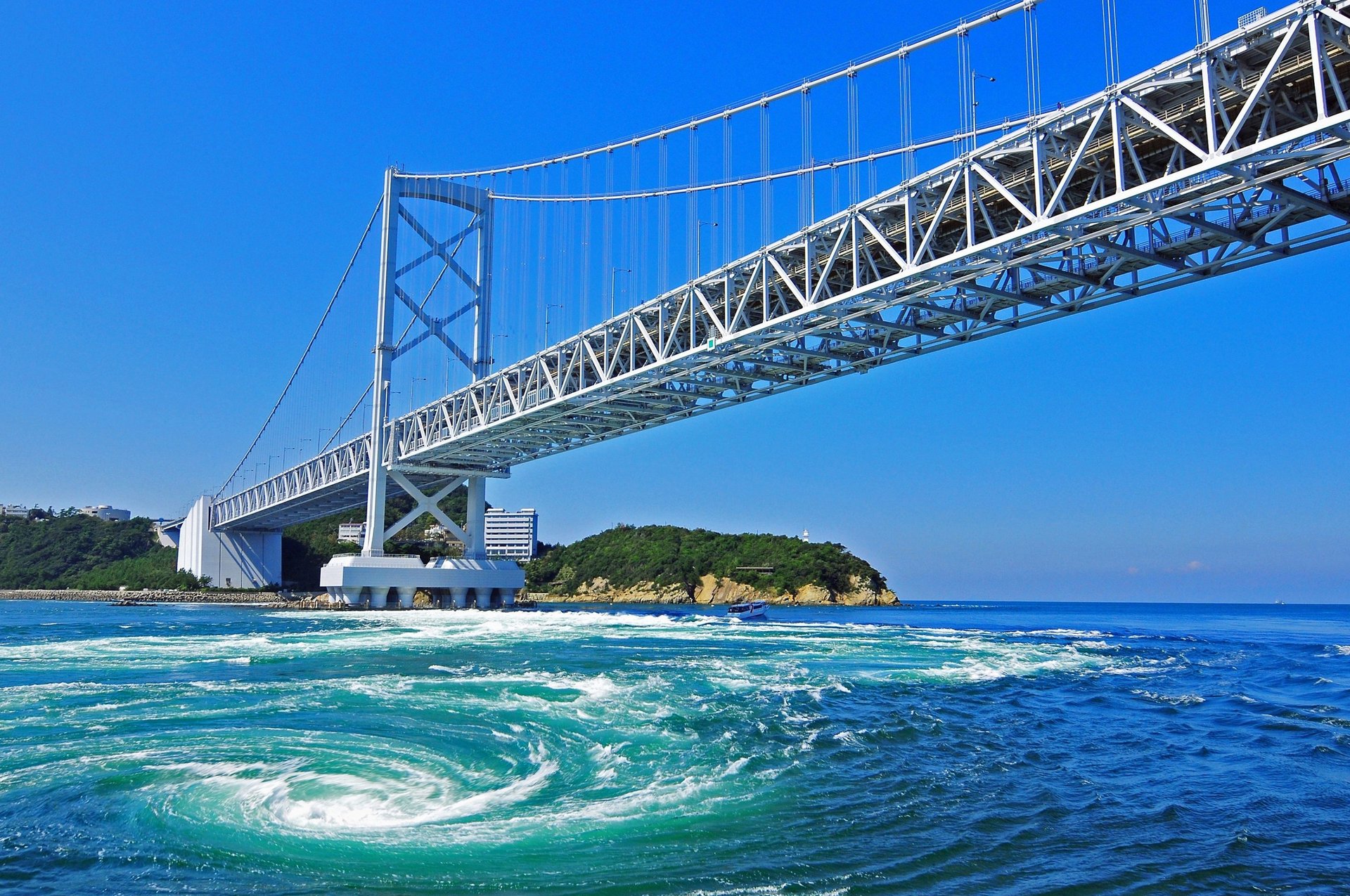
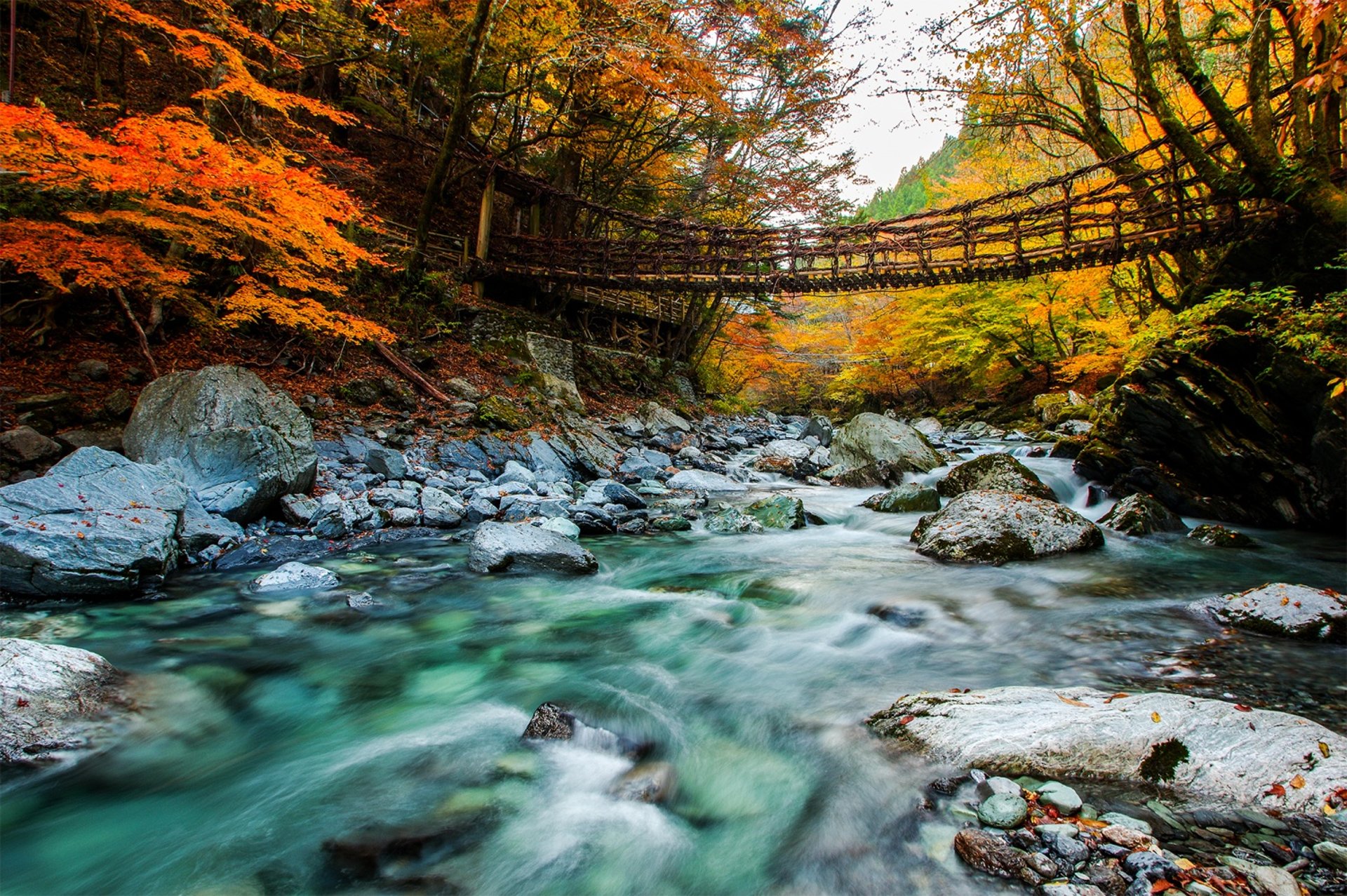
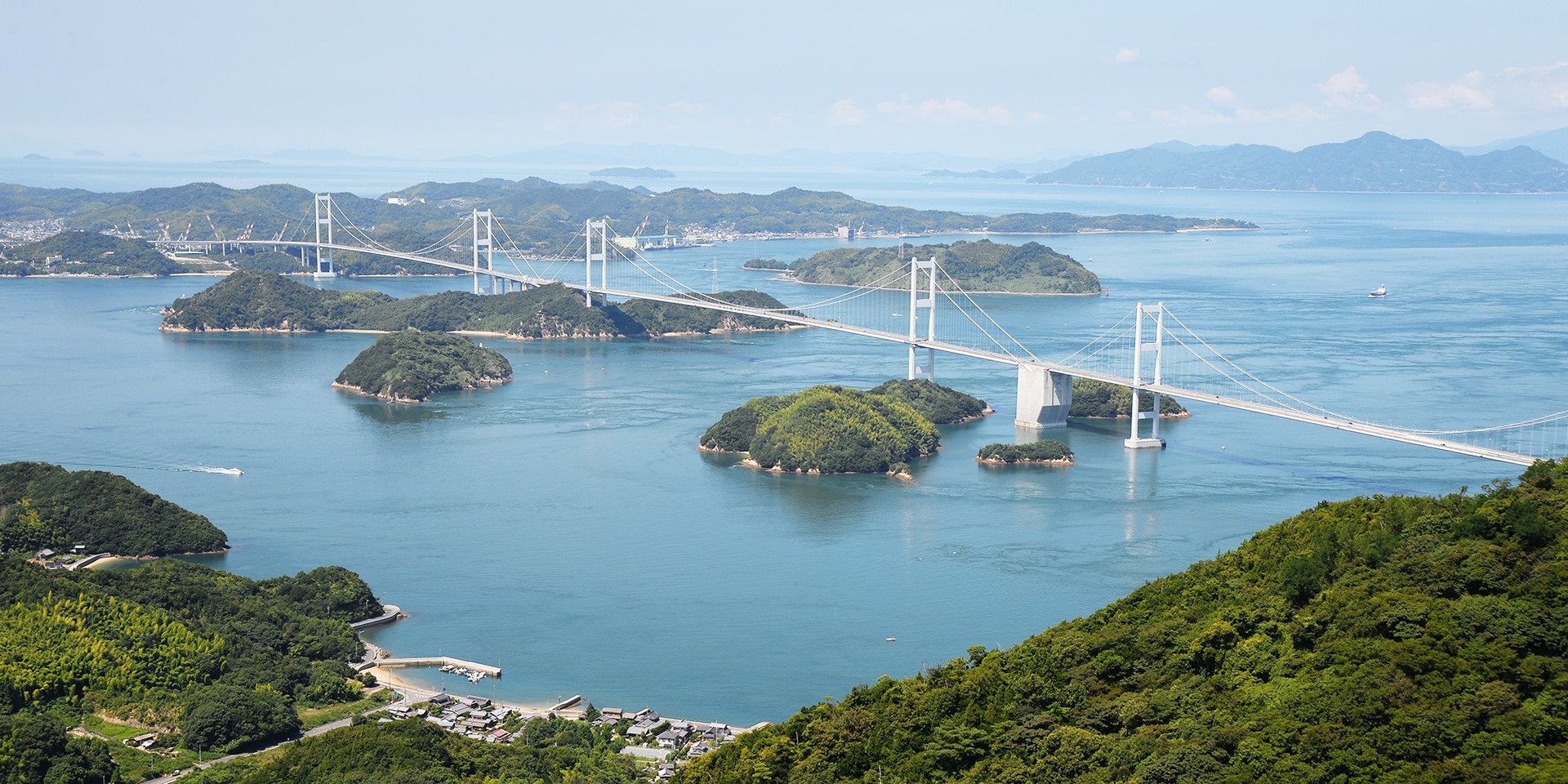
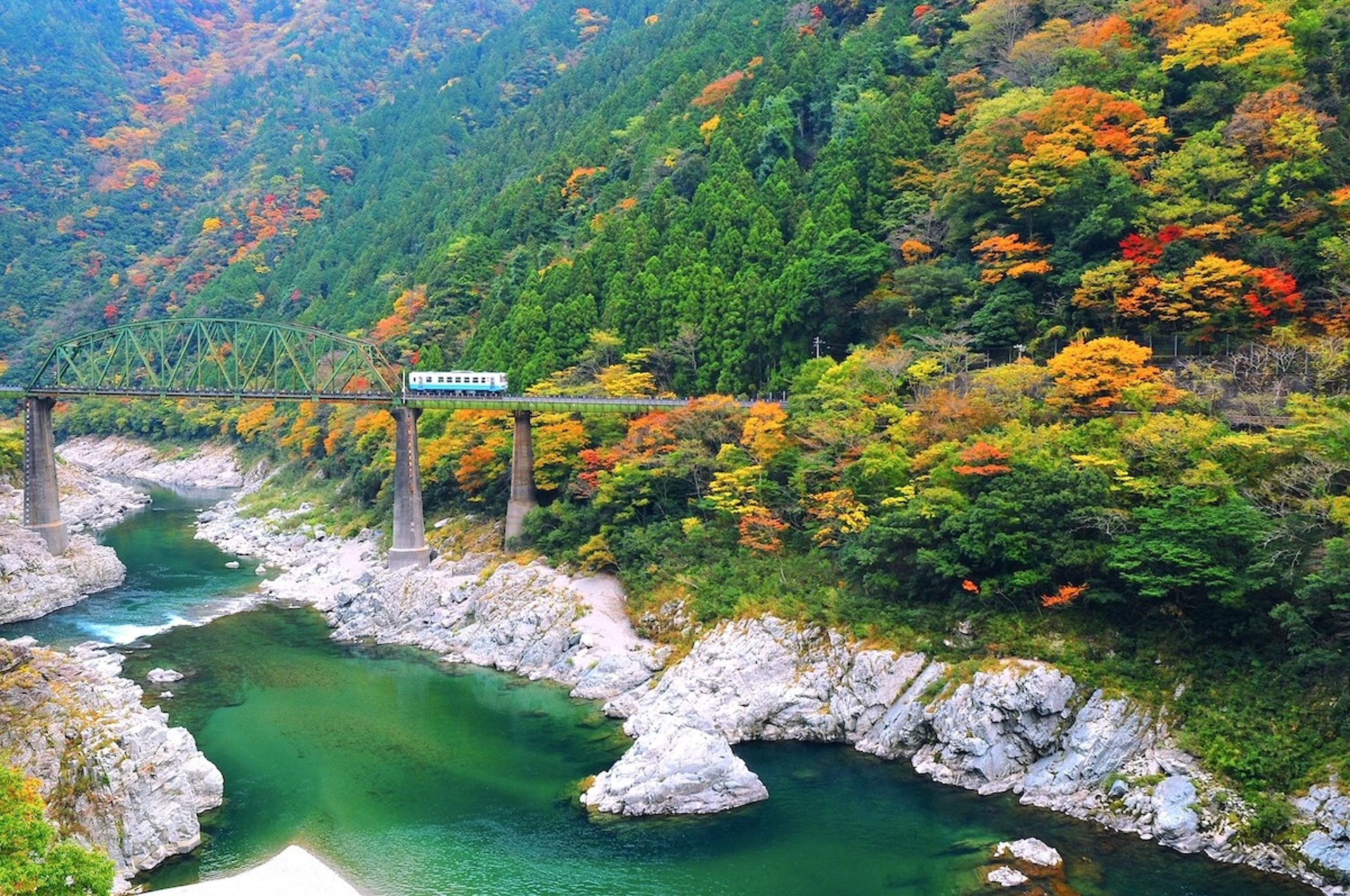
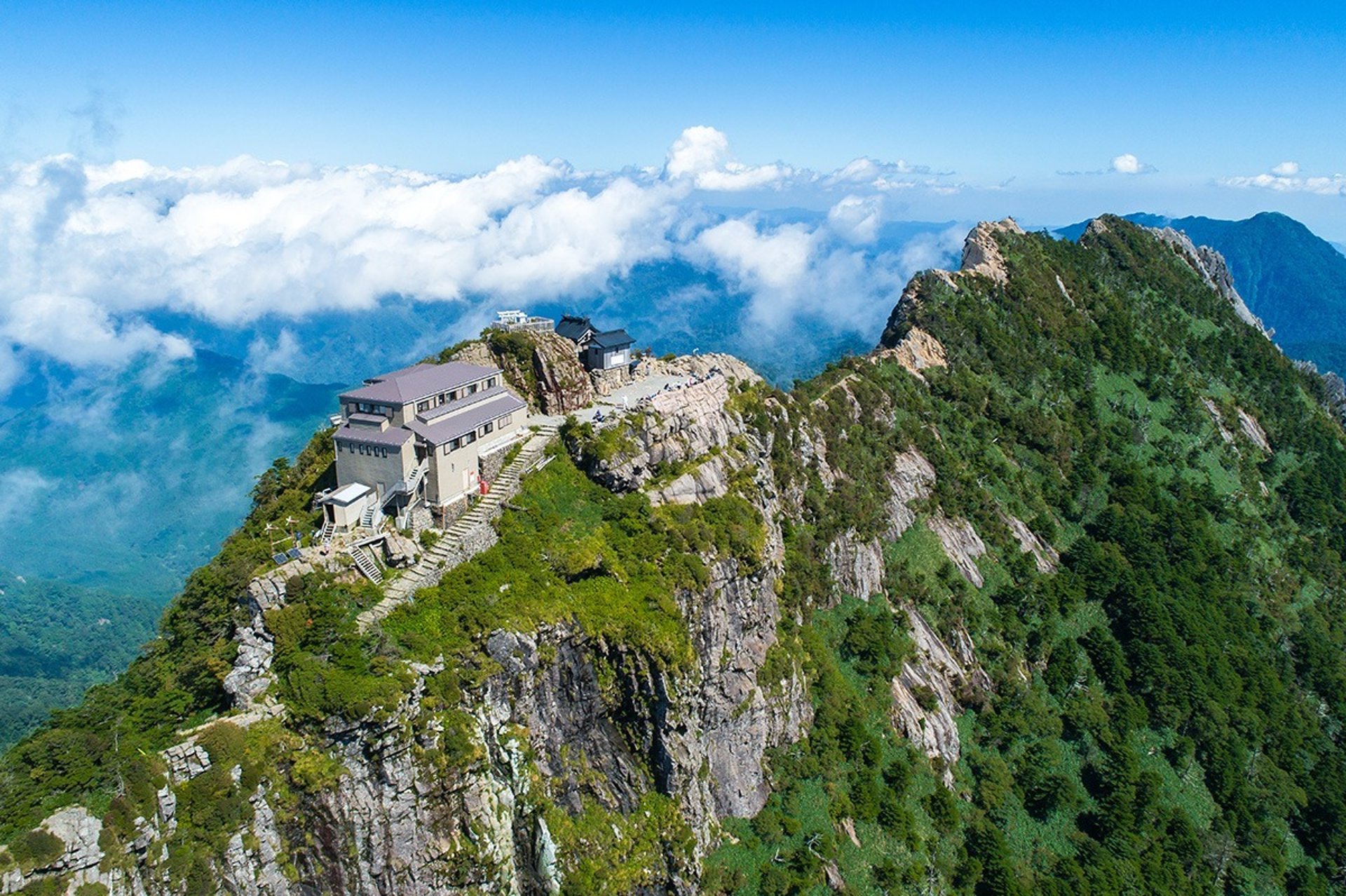
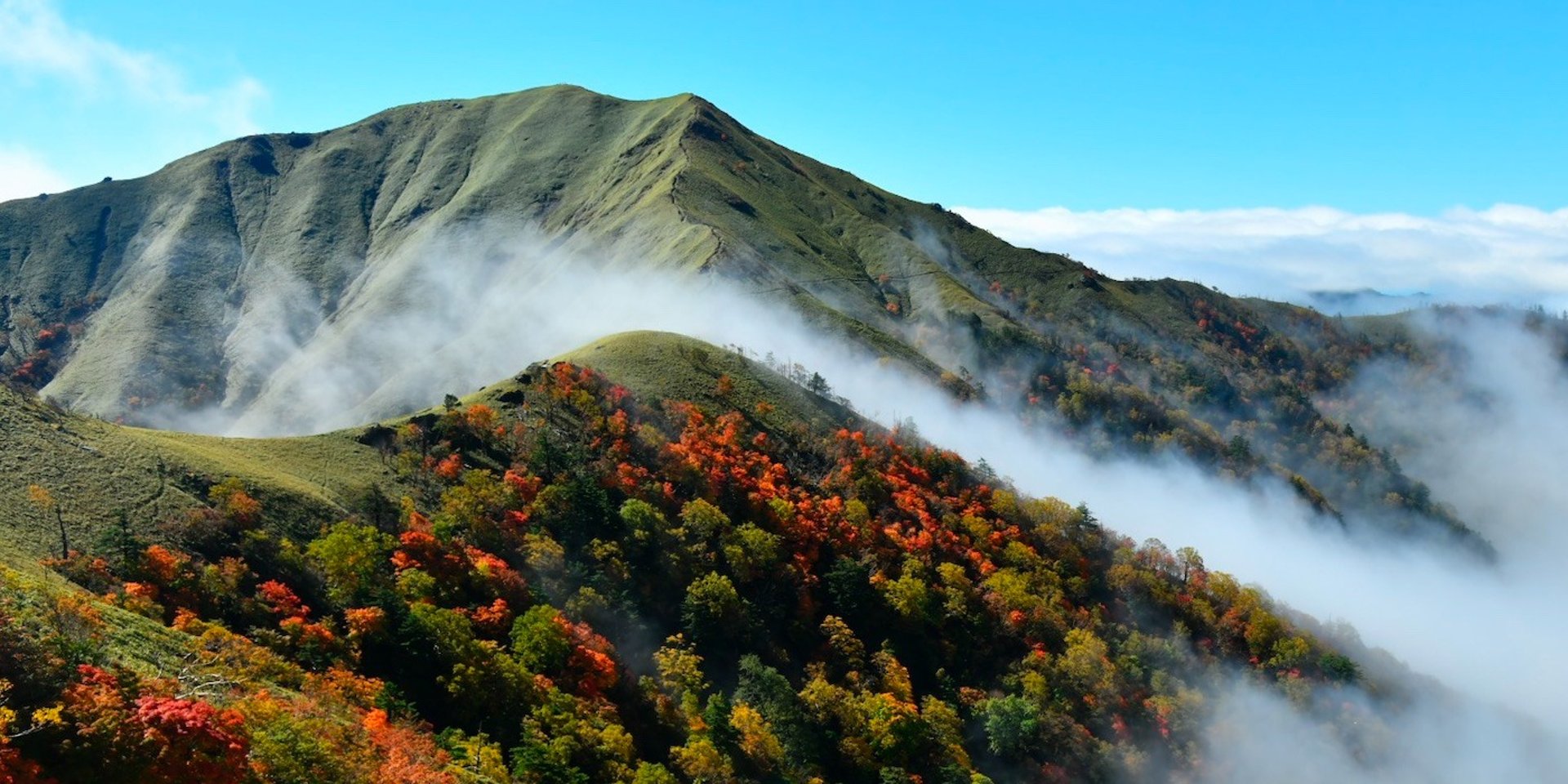
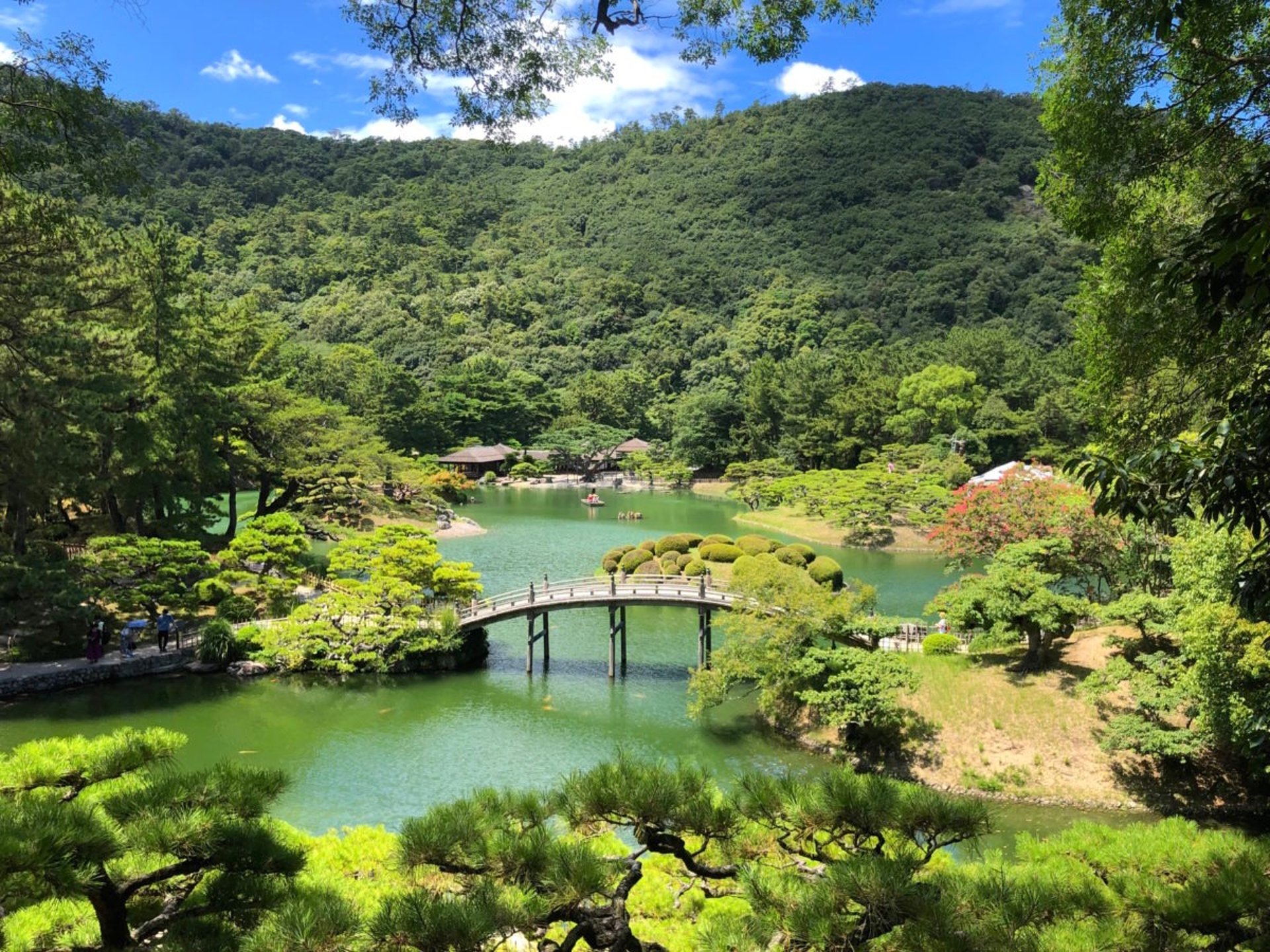
Shikoku
Shikoku is the smallest of Japan's four main islands and is known for its natural beauty, spiritual heritage, and rich cultural traditions. It is bordered by the Seto Inland Sea to the north and the Pacific Ocean to the south. Shikoku is divided into four prefectures: Ehime, Kagawa, Kochi, and Tokushima. Shikoku is famous as the site of the 88 temples of the Shikoku Pilgrimage, a pilgrimage to 88 temples associated with the Buddhist monk Kobo-Daishi (Kukai). The following is an introduction to the attractions of the sightseeing spots.
Shikoku's Seasonal Attractions
The Shikoku region is an attractive region with natural scenery, historical culture, and unique traditions. Each season of the year, spring, summer, autumn, and winter, shows a different side to the region, and each season has its own unique seasonal scenery and events to enjoy. Below, we will explain the charms of the Shikoku region in each season.
Spring (March to May)
When spring comes, beautiful cherry blossom viewing spots appear all over Shikoku, attracting many tourists who come to enjoy the fantastic scenery.
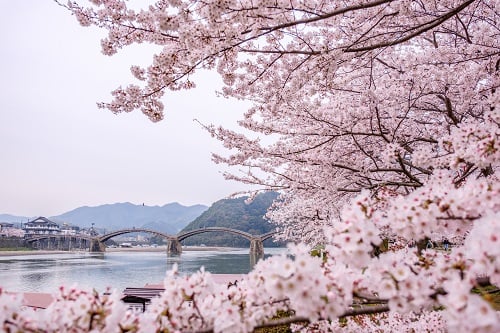

Attractions and Activities
・Tours of famous cherry blossom spots
Kochi Park in Kochi Prefecture and Mt. Bizan in Tokushima Prefecture are filled with cherry blossoms in full bloom, attracting many tourists. The area around Matsuyama Castle in Ehime Prefecture is also popular as a great cherry blossom viewing spot.
・The beginning of the pilgrimage
In Shikoku, there is the Shikoku 88 Temple Pilgrimage, which visits 88 temples. Spring is also the start of the pilgrimage season, and more pilgrims walk along the roads surrounded by fresh greenery. The air is clear during this time of year, making for a pleasant journey.
・Agricultural experience
Spring is the time when rice planting and vegetable sowing begin. You can make new discoveries by experiencing local agriculture, such as the olive orchards in Kagawa Prefecture and rice farming in Kochi Prefecture.
Summer (June to August)
It's a season full of festivals and seaside excitement.
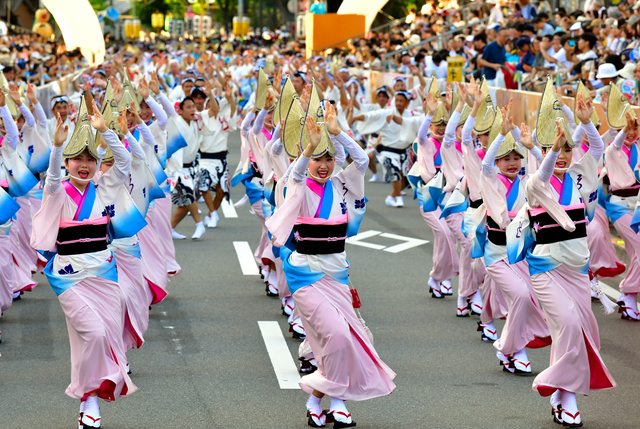

Attractions and Activities
・Awa Odori (Tokushima Prefecture)
The most famous summer event in Shikoku is the Awa Odori festival held in Tokushima City. This festival, held every year from August 12th to 15th, is a major event that attracts about 1 million tourists from all over the country. It is characterized by dancers in colorful yukata and unique rhythmic music.
・Resort experiences at the beach
Shikoku has a beautiful coastline, and many beaches are crowded in the summer. Beaches such as the coast near Shimonada Station in Ehime Prefecture and Kashiwajima in Kochi Prefecture are known for their crystal clear waters. You can also enjoy snorkeling and diving.
・Sunflower fields
The sunflower fields that spread out as far as the eye can see in the summer are also a highlight. In particular, the vast sunflower fields in Higashikagawa City in Kagawa Prefecture attract tourists.
Autumn (September to November)
In autumn, the leaves turn red all over Shikoku, and since it's harvest season, you can also enjoy gourmet food made with local ingredients.
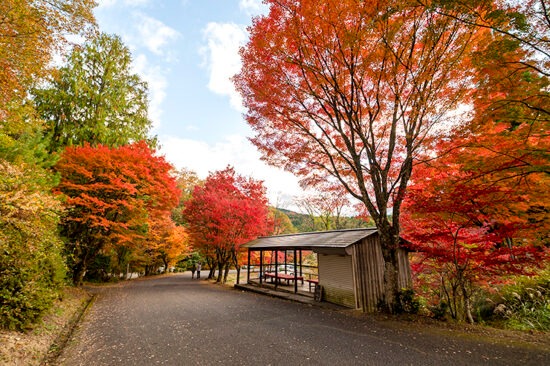

Attractions and Activities
・Famous places to see autumn leaves
・Tokushima Prefecture
Vivid autumn leaves can be enjoyed in the mountainous areas of Tokushima, such as Mount Tsurugi and Iya Valley. In addition, dishes using sudachi, a taste of autumn, are also famous.
・Kagawa Prefecture
Ritsurin Garden is famous as a beautiful spot to see autumn leaves in autumn. In addition to Sanuki udon, autumn saury and mushrooms are also delicious in this season.
・Ehime Prefecture
In the depths of autumn, golden autumn leaves spread across Mount Ishizuchi and Kumakogen. It is also the harvest season for Ehime mandarins, so you can enjoy sweet and juicy mandarins.
・Kochi Prefecture
In addition to being able to enjoy the beautiful scenery in the clear autumn air around the Shimanto River and Cape Muroto, autumn is also the season for Kochi's specialty "Tataki Bonito." Autumn is also a great time to visit temples associated with Kobo Daishi.
Winter (December to February)
Shikoku in winter is relatively mild and there is little snow in many areas, but there are still many events and attractions that are unique to winter.
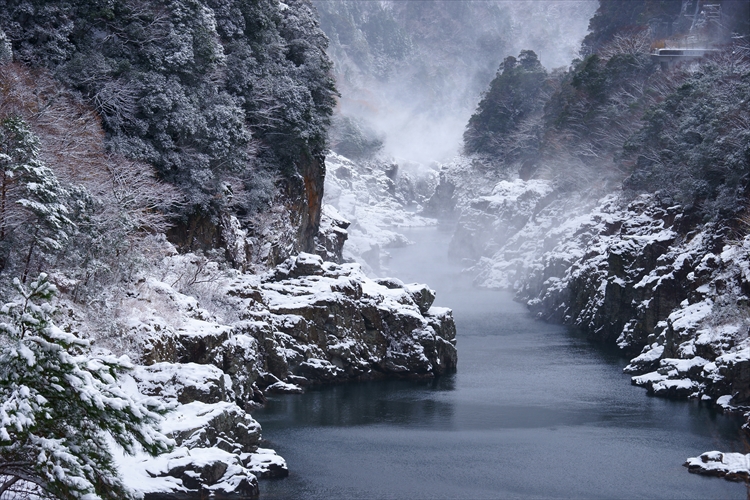

Attractions and Activities
・Tokushima
In winter, warm foods such as Tokushima ramen and Naruto Kintoki are popular. In addition, the snowy scenery of Iya Valley and other mystical winter scenery are also attractive.
・Kagawa
When it gets cold, you will miss hot pot dishes and hot kamaage udon noodles. You can also enjoy winter-only menus using olive oil on Shodoshima.
・Ehime
In winter, it is recommended to soothe your cold body at Dogo Onsen. Winter delicacies such as "kanburi" (cold yellowtail) and "iyokan" (Iyokan oranges) are also delicious.
・Kochi
In winter, the capital of Kochi offers a wide variety of local hot pot dishes such as "monkfish hot pot" and "Tosa Jiro hot pot". In addition, Ryugado Cave and Kashiwajima have many clear winter days, making them ideal for sightseeing.
Popular Attractions in Shikoku
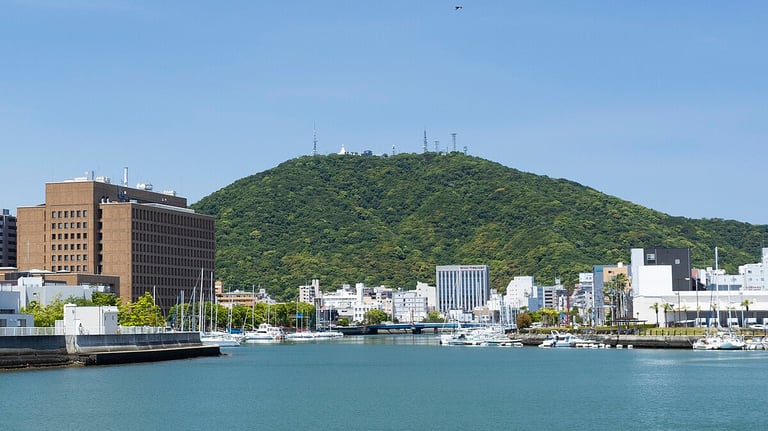

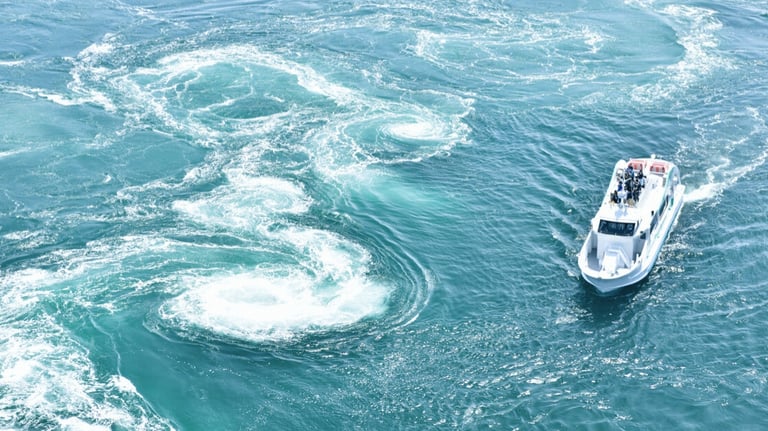

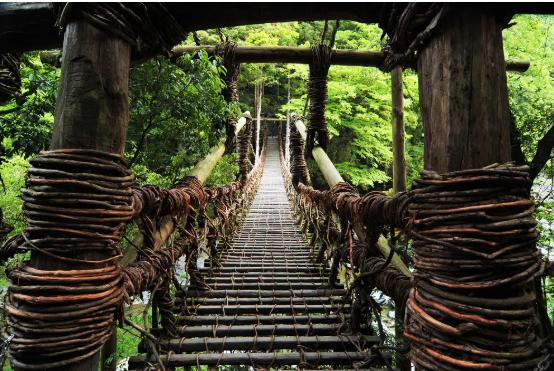

Tokushima Prefecture
Tokushima Prefecture, located in the eastern part of the Shikoku region, is a tourist destination where you can enjoy rich nature, historical cultural heritage, and unique traditions. Below, we will introduce in detail the main tourist spots that you should definitely visit when you visit Tokushima Prefecture.
Bizan is a 290-meter-high mountain located in Tokushima City, Tokushima Prefecture, in the Shikoku region. The name “Bizan” comes from the mountain's shape, which resembles a human eyebrow. It has long been a popular tourist destination for local people, and is also a popular spot for enjoying nature and spectacular views.
Bizan
Naruto Whirlpools
The Naruto whirlpools are a natural phenomenon that can be seen in the Naruto Straits, which separate Shikoku and Awaji Island, and are characterized by “whirlpools” that are among the largest in the world. The currents of seawater flow quickly through the narrow straits, and the collision of these currents creates a huge whirlpool. The largest whirlpools can be seen at low and high tide. The maximum diameter of the whirlpool is about 20 meters, and its power is breathtaking.
Iya's Kazura Bridge
The Iya Kazura Bridge is a famous sightseeing spot located in Iya, one of the three most remote areas in Japan, in Miyoshi City, Tokushima Prefecture, Shikoku. It is known as a suspension bridge made of wisteria vines, with a total length of about 45 meters and a height of about 14 meters. Its unique atmosphere and thrilling experience attract many tourists.
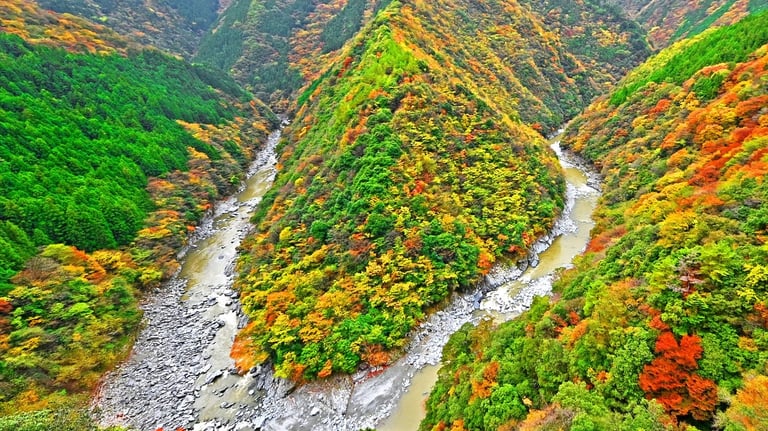

Hinoji Valley
Hinoji Valley is a beautiful valley located in Miyoshi City, Tokushima Prefecture, Shikoku, deeper into the Iya region. Its name comes from the fact that the valley's topography is curved like the character "hi". Characterized by its natural scenery and tranquil atmosphere, it is a place where you can enjoy the charm of a hidden place. Even within Iya, which is known as a hidden place, this is an area where even more untouched nature remains.
Mount Tsurugi
Mount Tsurugi is a 1,955m high mountain located on the border between Tokushima and Kochi prefectures in Shikoku, and is the second highest mountain in Shikoku after Mount Ishizuchi. It is also known as one of the 100 famous mountains in Japan, and is popular with mountaineers and nature lovers. In addition, there are a series of steep rocky peaks near the summit, and the impressive scenery earned it the name "Mount Tsurugi."
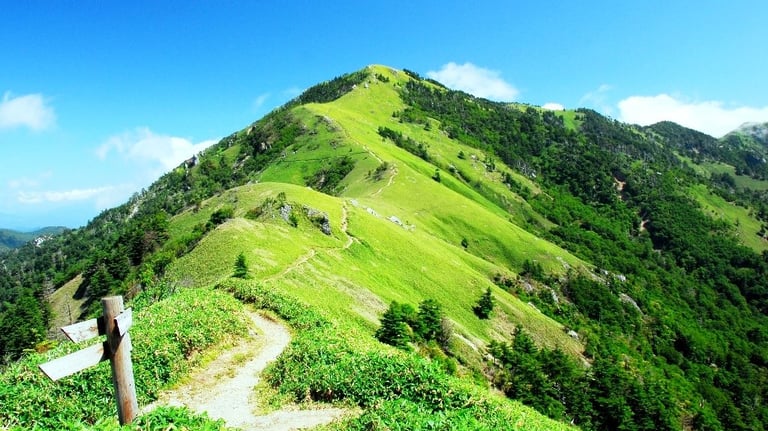

Oboke“ and ”Koboke" refer to different areas, forming an 8-kilometer-long canyon area in total. The names mean “big danger” and “small danger,” and derive from the difficulty that travelers in the past had in passing through this rugged terrain. The spectacular view of sheer rock walls and clear streams has been selected as one of the “100 best terraced rice paddies in Japan” and “100 best-kept secrets in Japan,” attracting many tourists from home and abroad.
Oboke and Koboke
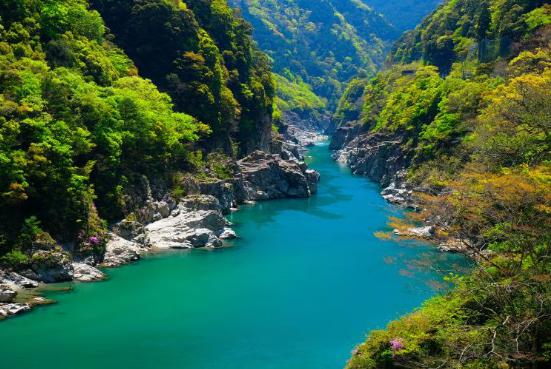

Wakimachi Udatsu Townscape
The udatsu-lined streets of Wakimachi are a historical townscape located in Mima City, Tokushima Prefecture, Shikoku, where merchant houses and samurai residences that flourished from the Edo to Meiji periods stand side by side. The udatsu, or firewalls, are a distinctive feature of the area, and it is a valuable tourist attraction that conveys the traditional Japanese architectural style to the present.
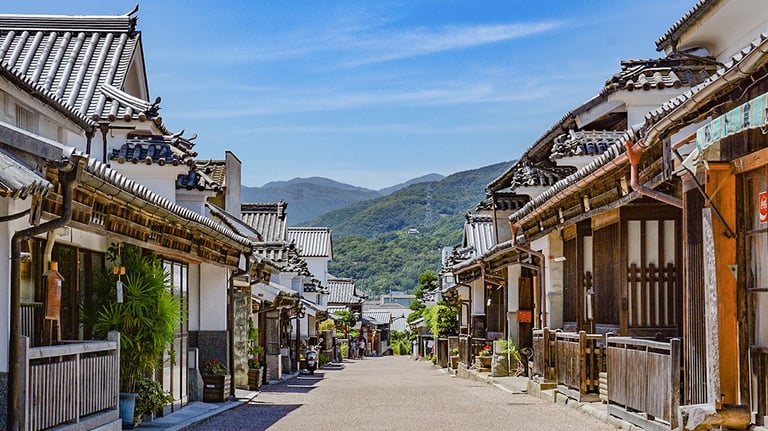

Otodoro Falls
Otodoro Falls is a beautiful waterfall located in Naka City, Tokushima Prefecture, Shikoku, and is a famous waterfall that has been selected as one of the 100 best waterfalls in Japan. The 50-meter waterfall has a strong presence even from a distance. The amount of water increases especially after rain or when the snow melts, allowing you to enjoy a more dynamic view.
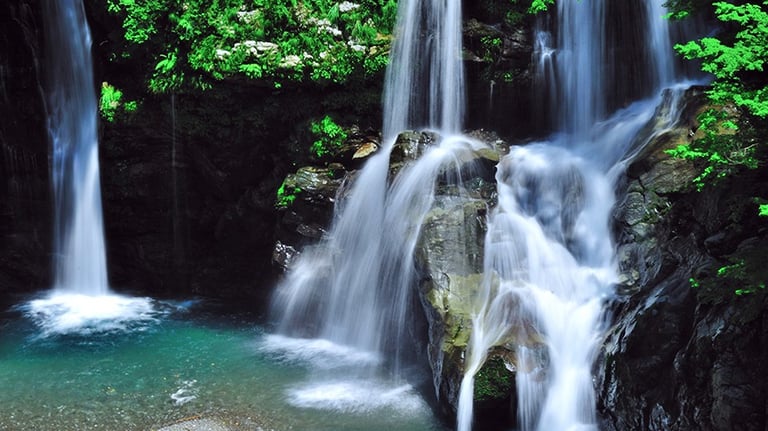

Mannaka Sennen Monogatari
The Shikoku Mannaka Sennen Monogatari is a sightseeing train that runs north to south through most of Shikoku, and began service in 2016. This train is attracting attention as a special sightseeing train that allows passengers to experience the rich nature, history, and culture of Shikoku. Connecting Matsuyama Station in Ehime Prefecture and Tosakure Station (or Susaki Station) in Kochi Prefecture, the train offers a journey that allows passengers to enjoy the attractions along the train line.
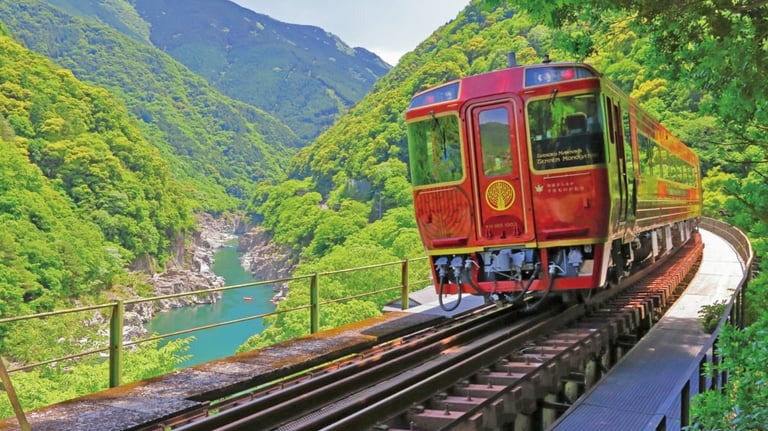

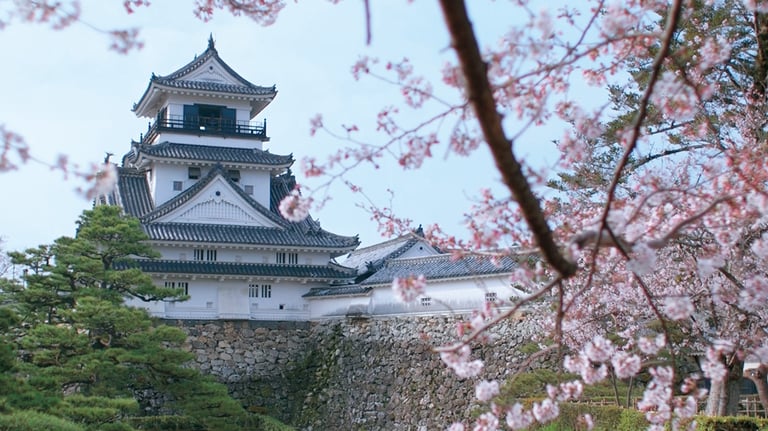

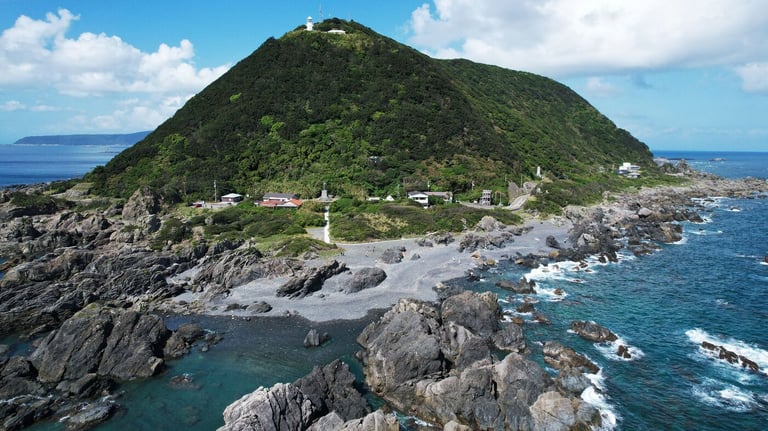

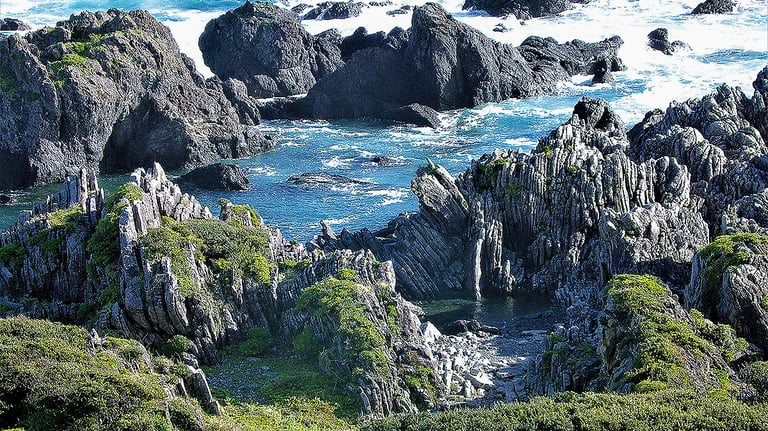

Kochi Prefecture
Kochi Prefecture, located in the southern part of the Shikoku region, is an attractive tourist destination with rich nature, history, and unique culture. It is particularly famous for its sites associated with great figures such as "Sakamoto Ryoma," its beautiful coastline, and its fresh seafood. Below, we will introduce in detail the main tourist spots that you should definitely visit when you visit Kochi Prefecture.
Kochi Castle is a Japanese castle located in Kochi City, Kochi Prefecture, and is known as one of the 12 remaining castle towers. The castle was built in 1601 by Kazutoyo Yamauchi, the first lord of the Tosa domain. Since the castle was not severely damaged by war or natural disasters, the main buildings, including the castle tower and Honmaru Palace, have remained almost completely intact. The castle is one of the few castles in Japan where both the castle tower and the Honmaru Palace are still standing at the same time. It is also designated as an Important Cultural Property of Japan, making it a sightseeing spot that combines historical value and beautiful scenery.
Kochi Castle
Murotomisaki
Muroto Misaki, located in the eastern part of Kochi Prefecture in Shikoku, is a scenic natural beauty spot jutting out into the Pacific Ocean. Because of its spectacular scenery and dynamic topography, it has been selected as one of the “50 Best Lighthouses in Japan” and "100 Best White Sand and Green Pines in Japan. The cape faces the Pacific Ocean and is characterized by a landscape of rugged reefs and cliffs. It is a geologically valuable place and was recognized as a UNESCO World Geopark in 2011. It is also known as a sacred site associated with Kobo Daishi (Kukai), including Kongofukuji Temple and Mogosakiji Temple.
Muroto Geopark
Muroto Geopark is a naturally rich area located in the eastern part of Kochi Prefecture, which was designated a UNESCO Global Geopark in 2011. It is characterized by dynamic topography formed by the collision of the Pacific Plate and the Philippine Sea Plate. Traces of crustal movement that have continued from about 12 million years ago to the present remain, allowing visitors to witness the activity of the Earth. This region is not only home to valuable geological topography and landscapes, but is also a special place where you can experience the culture and history that are rooted there, as well as the connections to people's lives.
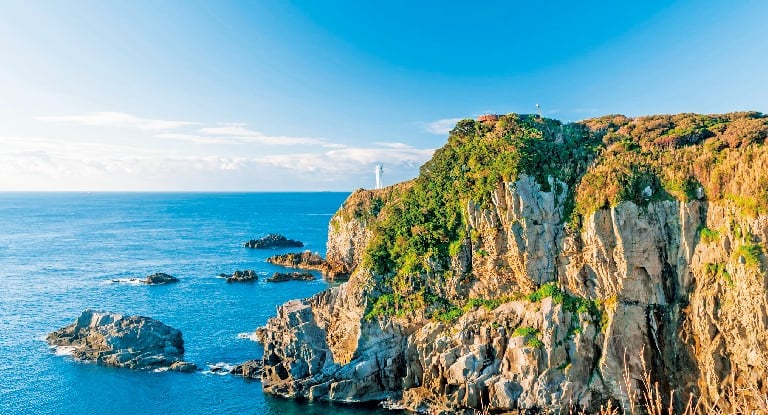

Ashizurimisaki
Ashizurisaki is a cape located in the southwestern part of Kochi Prefecture, jutting out into the Pacific Ocean, and is a scenic spot rich in nature. It is characterized by its spectacular scenery and dynamic topography, and has been selected as one of the “50 Best Lighthouses” and "100 Best White Sand and Green Pines in Japan. Furthermore, the area was recognized as a UNESCO World Geopark in 2018, making it a geologically valuable place.
Kongofukuji Temple
Kongofukuji Temple is located in Tosashimizu City, Kochi Prefecture, and is known as the 38th temple of the 88 sacred places on Shikoku Island. This temple is associated with Kobo Daishi (Kukai) and is a special place to experience the beautiful scenery and deep religious culture of Cape Muroto, as well as a quiet place to calm the mind.
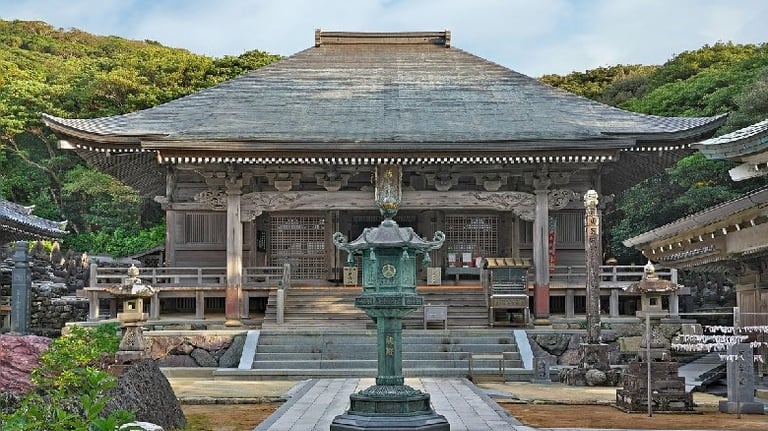

Hakusan Cave, which is gaining popularity among women as a power spot for love fulfillment, is also designated as a natural monument of Kochi Prefecture and is a huge cave formed by wave erosion. The cave is about 16 meters high and 17 meters wide, and its grand scale and mysterious atmosphere are characteristic, attracting visitors.
Hakusan Cave
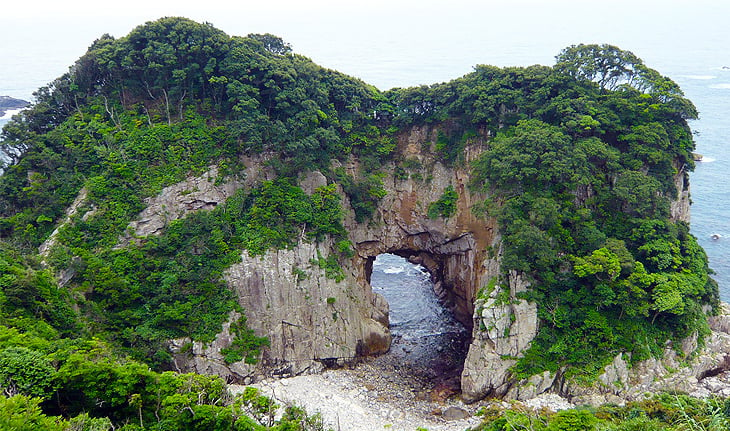

Ryugado Cave
Ryuga-do Cave is one of the three largest limestone caves in Japan, located in Kami City, Kochi Prefecture. It is a huge limestone cave about 4 kilometers long, of which about 1 kilometer is open to the public. The caves are dotted with stalactites of various sizes, and visitors can enjoy the natural works of art that have been formed over millions of years. It is also designated as a national natural monument. The beautiful stalactites and mysterious scenery inside the caves attract many tourists from Japan and abroad.
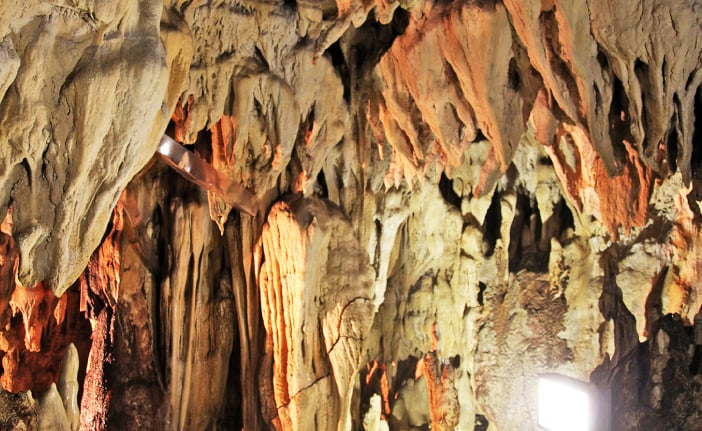

Large Cedar Tree
Located in Susaki City, Kochi Prefecture, Sugi-no-Osugi is one of Japan's largest cedar trees, attracting many people because of its grandeur and historical value. The osugi, which is estimated to be over 3,000 years old, is a symbol of the community and is designated as a national natural monument. This gigantic cedar has a trunk circumference of about 16 meters and a height of about 45 meters. It is known as one of the largest trees in Japan and is designated as a national natural monument.
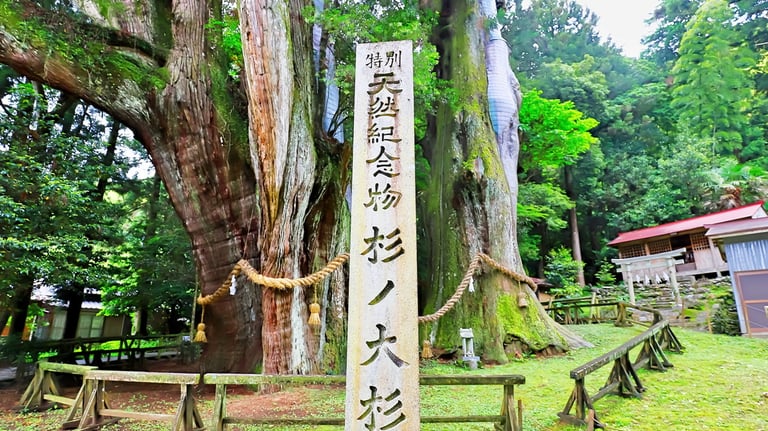

Kashiwajima
Kashiwa-jima is a small island located in Otsuki Town, Kochi Prefecture, and is characterized by its crystal clear waters and rich nature. It is a rare “tropical paradise” in Japan, and is well known by many tourists and marine sports enthusiasts. Known as a mecca for diving and snorkeling, it is one of the most beautiful places to enjoy the beautiful sea in Japan. The sea around Kashiwa Island is very clear and has a unique blue color called “Kashiwa-jima Blue”
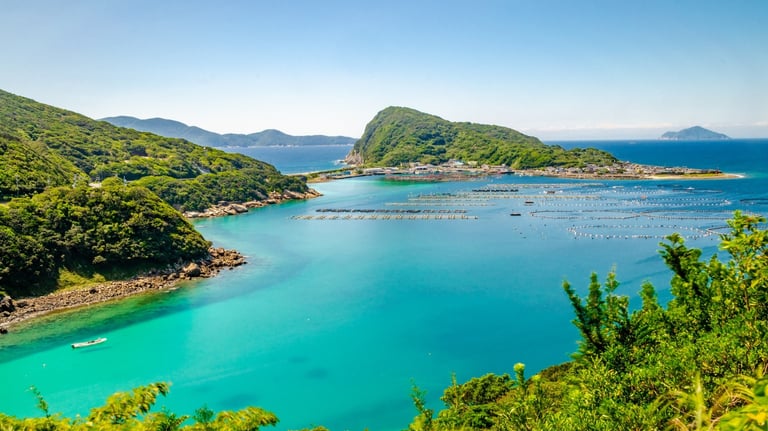

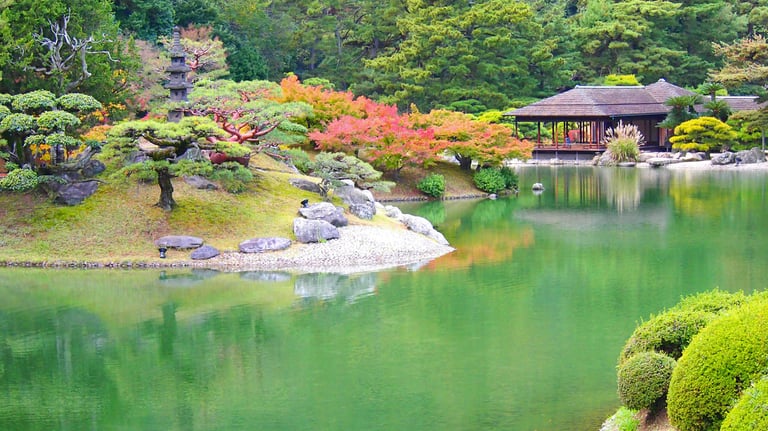

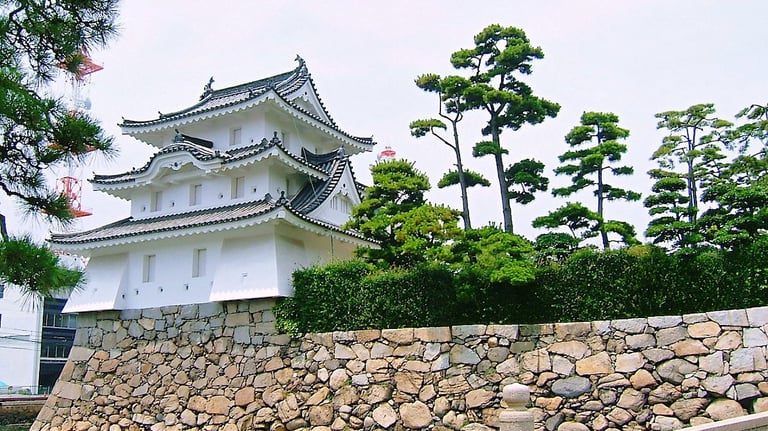

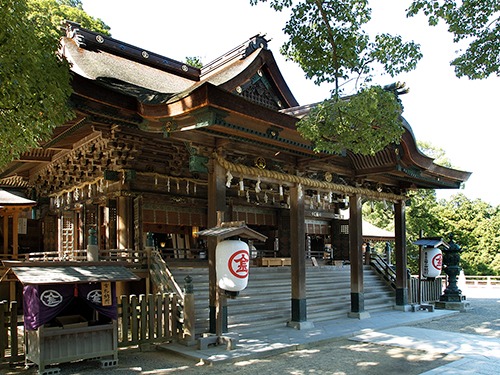

Kagawa Prefecture
Kagawa Prefecture, located in the northeastern part of the Shikoku region, is a tourist destination also known as "Udon Prefecture." Its rich natural environment, historical and cultural heritage, and beautiful scenery of the Seto Inland Sea attract many tourists from both within Japan and overseas. Below, we introduce some useful information for tourists visiting Kagawa Prefecture.
Ritsurin Garden is a Japanese garden located in Takamatsu City, Kagawa Prefecture, and is designated as a Special Place of Scenic Beauty by the national government. Due to its history and beauty, it is sometimes counted as one of the "Three Great Gardens of Japan" (the other two are Kenrokuen in Kanazawa City and Kairakuen in Mito City). Ritsurin Garden has a history of about 400 years, and is known as a feudal lord's garden during the Edo period. The garden covers an area of about 75 hectares, which is equivalent to about 16 Tokyo Domes.
Ritsurin Garden
Takamatsu Castle Ruins
Takamatsu Castle Ruins is a historic site located in Takamatsu City, Kagawa Prefecture. It is the remains of a flatland castle built in 1597 by Ikoma Chikamasa, the first lord of the Iyo Matsuyama Domain. However, most of the castle was demolished in accordance with the castle abolition order of the Meiji period, and only the stone walls and moat remain today. Part of the castle has now been restored and maintained as a park, a place of relaxation beloved by locals and tourists alike.
Kotohira Shrine
Kotohiragu Shrine is a well-known shrine located in Kotohira-cho, Nakatado-gun, Kagawa Prefecture, Japan. The shrine enshrines the deity Omononushi no Kami and the Emperor Shotoku, and is believed to be beneficial for safe voyages, prosperous business, and good health. It has also been worshipped by many people since ancient times and was known as a nationwide pilgrimage site, especially during the Edo period (1603-1867).
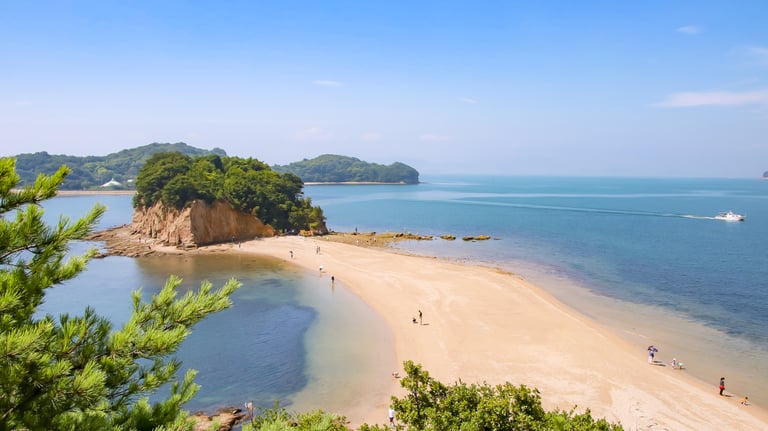

Angel Road
Angel Road is a sandy beach road in Tonosho Town (located in the western part of Shodoshima Island). It is a sand road that appears out of the sea at low tide, connecting small islands. It was named “the road drawn by angels” because of its fantastic scenery. Legend has it that walking hand in hand along this path will make one's wishes come true or bring happiness, and it is said to be especially beneficial for the fulfillment of love and marital bliss.
Kankakei
Kankakei is a valley boasting magnificent natural scenery on Shodoshima Island in Kagawa Prefecture, Japan, and is counted among Japan's three most beautiful valleys. Characterized by strangely shaped rocks and bizarre stones formed over a long period of time by erosion from wind, rain, and the sea, it is a spectacular spot that shows different faces throughout the seasons. The Kankakei Ropeway in Kankakei is the only one in Japan where you can view the sky, sea, and valley at the same time, and enjoy the various views of each season.
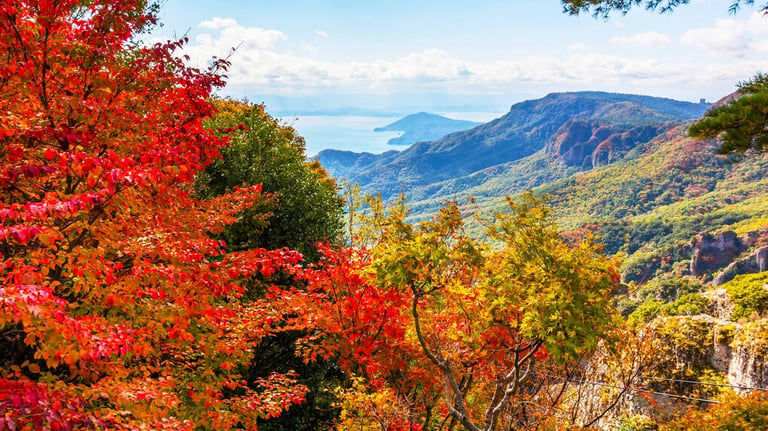

Zentsuji Temple, located in Zentsuji City, Kagawa Prefecture, Japan, is an important temple associated with Kobo Daishi (Kukai), founder of the Shingon sect of Buddhism. It is the 75th temple of the 88 sacred places in Shikoku and is known as one of the birthplaces of Shingon esoteric Buddhism. It is also famous as the place where Kukai spent his childhood and was ordained, and is a holy place visited by many worshippers and tourists. Zentsuji Temple is a special place where history, culture, and faith related to Kukai live on.
Zentsuji Temple
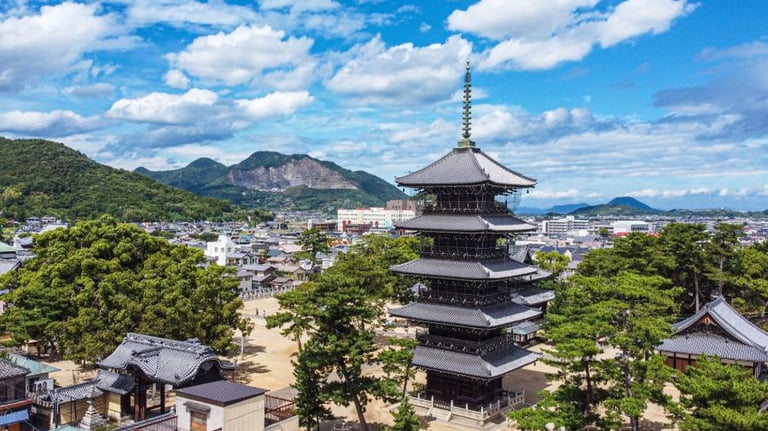

Yashima Temple
Yashima Temple is a historic temple in Takamatsu, Kagawa Prefecture, Japan, and the 84th temple of the 88 Sacred Temples of Shikoku. The temple is located on a plateau called Yashima, which has been a place of worship since ancient times and is also known as the site of the "Battle of Yashima" during the Genpei War in the Sengoku period. Yashima-ji Temple is a fascinating place where history, culture, and beautiful natural scenery come together.
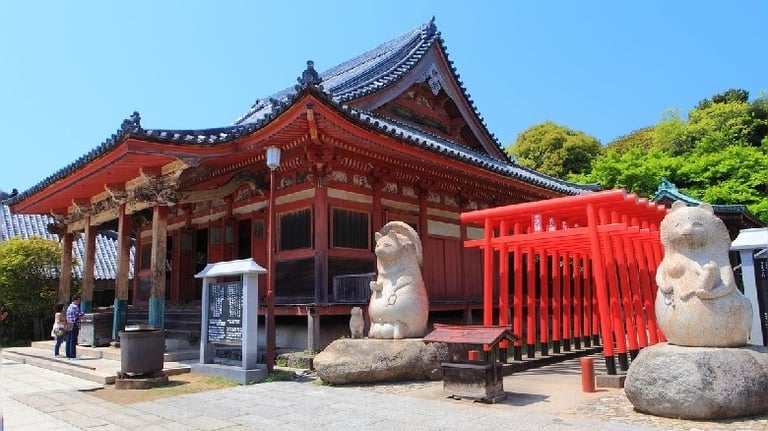

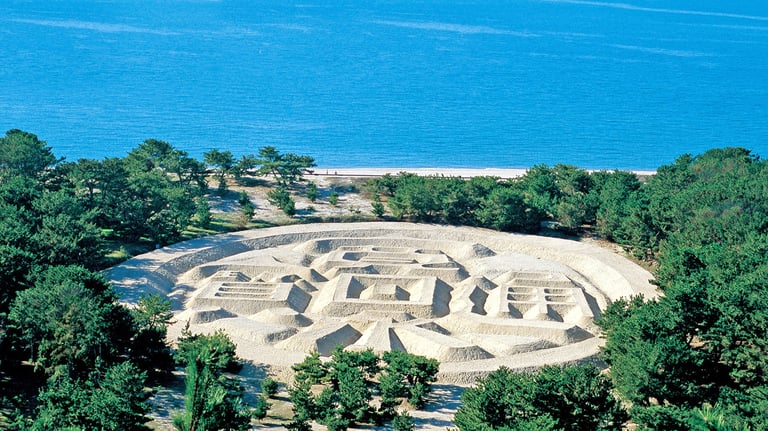

Zenigata Sunae is a giant sand painting located in Kan'onji City, Kagawa Prefecture, Japan, and is also designated as a national natural monument. This sand painting depicts a giant coin shape with a diameter of about 122 meters, and has been a symbolic presence loved by local people for a long time. It is also known as one of the "Three Great Scenic Spots of Japan," and attracts many tourists due to its scale and historical background.
Zenigata Sunae
Chabogahama Beach
One spot that is rapidly gaining popularity in Kagawa is Chabogahama Beach, which boasts a 1-km long beach! At low tide, the surface of the water reflects like a mirror, creating a fantastic photo opportunity. Its photogenic appearance is like the Salar de Uyuni in Bolivia. The beautiful sight at dusk is truly a sight worthy of the word “spectacular,” and has been selected as one of the "100 best sunsets in Japan.
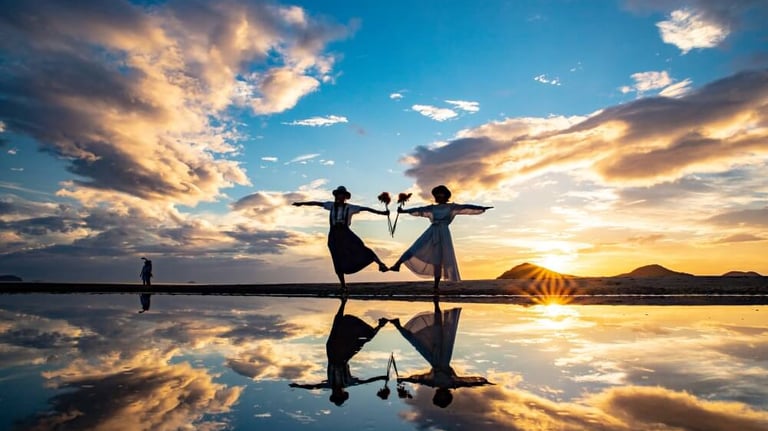

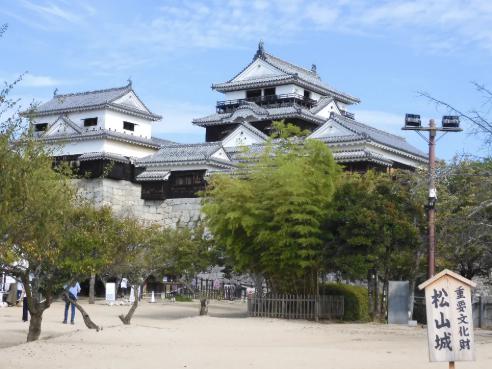

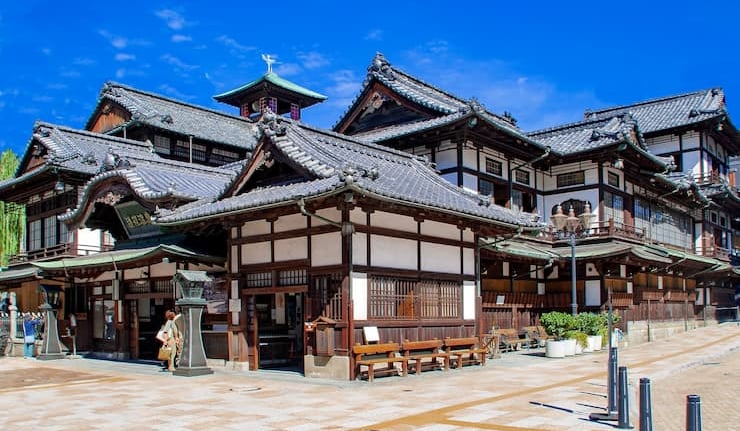

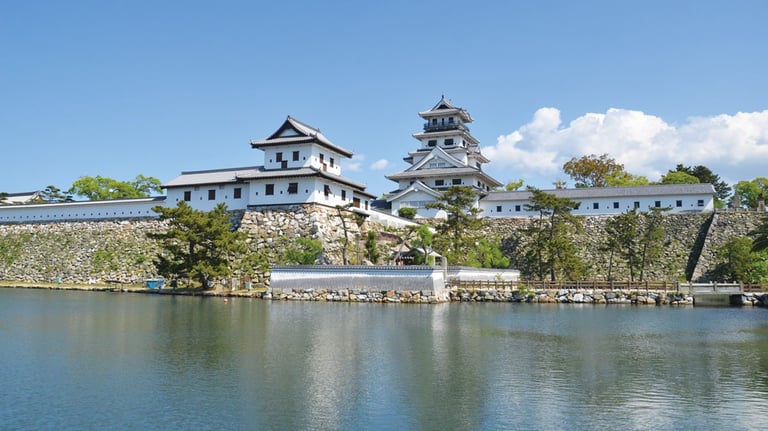

Ehime Prefecture
Ehime Prefecture is located in the northwestern part of Japan's Shikoku region. The prefectural capital is Matsuyama City, a region blessed with a mild climate and abundant nature. Ehime is known throughout Japan for its oranges, but the prefecture also offers a wide variety of other attractions, including historical sightseeing spots, beautiful hot springs, and the islands of the Seto Inland Sea. Below is some useful information for tourists visiting Ehime.
Matsuyama Castle is a historic castle located in Matsuyama City, Ehime Prefecture, and is one of the three great flatland castles in Japan. It was built from the Sengoku period to the Edo period, and its castle tower still stands today, attracting many tourists as a valuable cultural asset. It was built from the middle to the top of Mount Katsuyama, which is about 132 meters above sea level, and is a type of castle known as a "flatland castle." It was built by taking advantage of the terrain that combines flat land and mountains, and is characterized by its highly defensive structure.
Matsuyama Castle
Dogo Onsen
Dogo Onsen, located in Matsuyama City, Ehime Prefecture, Japan, is known as the oldest hot spring resort in Japan, and is a popular spot visited by many tourists from both Japan and abroad. It is said to have a history of about 3,000 years, and is also a place that symbolizes "Japan's hot spring culture". In addition, the "Dogo Onsen Main Building", which has been designated as an Important Cultural Property of Japan, is characterized by its beautiful architecture and traditional atmosphere, making it a must-see place for hot spring lovers and history fans. Dogo Onsen Main Building, which is also a symbol of the city, was the first public bath in Japan to be designated as an Important Cultural Property of Japan in 1994.
Imabari Castle
Imabari Castle is a historic castle in Imabari City, Ehime Prefecture, Japan, and is one of the three great water castles in Japan. It is known as a "sea castle" due to its unique location surrounded by the sea and canals. It is also famous as a castle designed by the master castle builder Todo Takatora, and attracts many tourists with its beautiful scenery and historical value. Imabari Castle was built facing the Seto Inland Sea, and is known as a "water castle" that skillfully uses moats and waterways. In particular, the castle tower and turrets still remain, and are highly regarded as valuable cultural assets.
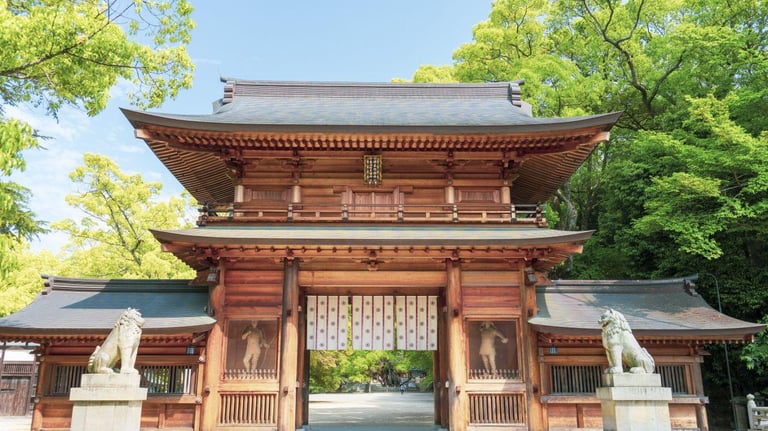

Oyamazumi Shrine
Oyamazumi Shrine is a historic and prestigious shrine located on Omishima Island in Imabari City, Ehime Prefecture, Japan, and is an important shrine also known as the "General Guardian of Japan." The shrine enshrines the god who protects the mountains and islands, and has long been a place of worship for samurai and sailors. It also has a treasure museum designated as an Important Cultural Property of Japan, where many historical weapons and documents are on display. It is said to have been founded about 2,600 years ago, and has existed for so long that it is mentioned in the Nihon Shoki. It has long been known as the "God of Warriors," and has attracted the devout faith of samurai.
Shimanami Kaido
The Shimanami Kaido is a 70-km long road connecting Onomichi City, Hiroshima Prefecture, and Imabari City, Ehime Prefecture, Japan. It is the first tourist route in Japan to be built on a full-scale "bicycle path. Opened in 1999, it was designed not only for automobiles, but also for bicycles and pedestrians. By connecting islands in the Seto Inland Sea National Park, the road aimed to revitalize the region and promote tourism. It is a spectacular route that connects the beautiful islands of the Seto Inland Sea, and is a place that can be enjoyed in various ways throughout the four seasons. here are trips that suit your purpose, such as cycling, driving, and experiencing the cuisine and culture of each island.
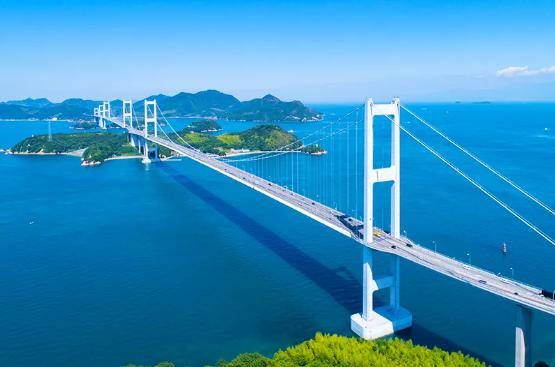

Ishizuchi is located in the Shikoku region of Japan and is the highest mountain in Shikoku at 1,982 meters above sea level. It is one of the 100 most famous mountains in Japan, and its natural beauty can be enjoyed in all four seasons: fresh greenery in spring, alpine flora in summer, autumn leaves in fall, and snowy landscapes in winter. It has long been revered as a sacred place of “mountain worship” and is one of the Seven Sacred Mountains of Japan. Mountain climbing and sightseeing by cable car and lift are also popular, and the mountain is an attractive place that attracts many visitors throughout the four seasons.
Mount Ishizuchi
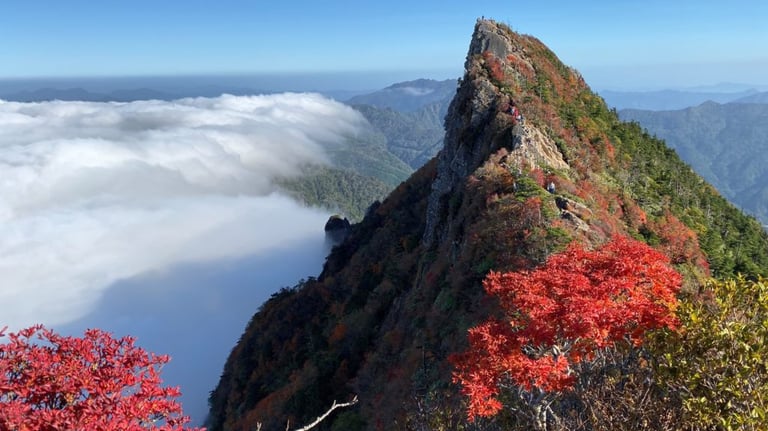

Uchiko Town
Uchiko Town is a beautiful town in Ehime Prefecture, Japan, with a strong history and culture. Its traditional streetscape is also known as the "original landscape of Japan." Uchiko Town flourished from the Edo period through the Meiji and Taisho periods through the production of "wood wax" and "washi paper." Even today, its old streetscape and traditional crafts are carefully preserved, attracting many tourists from both within Japan and overseas. Uchiko Town has been designated an "Important Preservation District for Groups of Traditional Buildings," and is characterized by its streetscape lined with merchant houses and samurai residences from the late Edo period through the Meiji and Taisho periods.
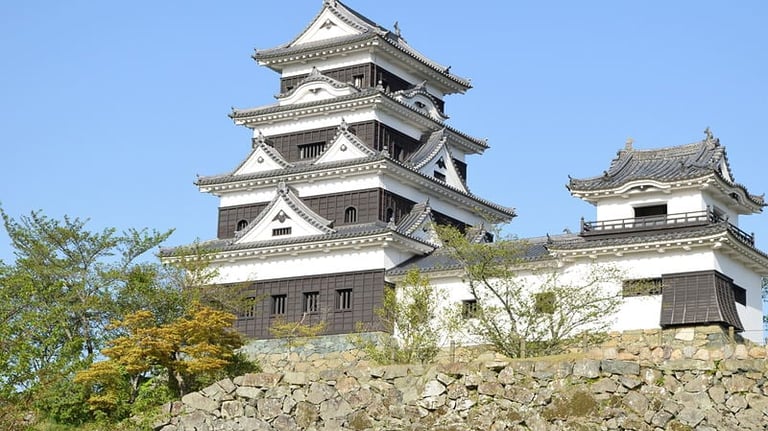

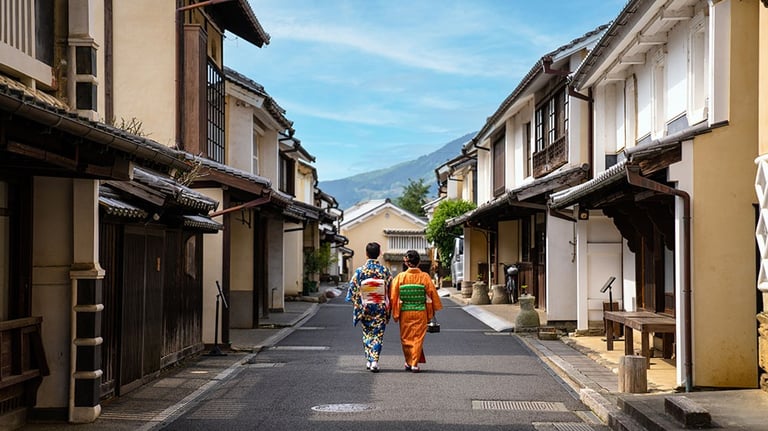

Ozu Castle is a historic castle located in Ozu City, Ehime Prefecture, Japan, and is a symbol of Ozu City, known as the "Little Kyoto of Iyo." The castle is located along the beautiful Hijikawa River, and is characterized by its scenery that blends in with the surrounding nature. The castle tower was restored in 2004 using wood, and has attracted attention for its beauty and high level of craftsmanship. The existing "Inuimon" gate and "Watari-yagura" tower are designated as Important Cultural Properties of Japan. The castle is also known as a place where you can enjoy valuable historical heritage such as the restored castle tower and existing towers.
Ozu Castle
Uwajima Castle
Uwajima Castle is a historic castle in Uwajima, Ehime Prefecture, Japan, and is one of 12 remaining castle towers. Located at the southernmost tip of Shikoku, the castle is also known as a "sea castle" built on a hilly area facing the Seto Inland Sea. Uwajima Castle is built on a small hill about 70 meters above sea level, and is known for the beautiful view from the castle tower. The existing castle tower was built in the early Edo period and is designated as an Important Cultural Property of Japan. Uwajima Castle is a popular tourist destination for history buffs and travelers alike, as it is a castle with a valuable, surviving castle tower and is of great historical value.
